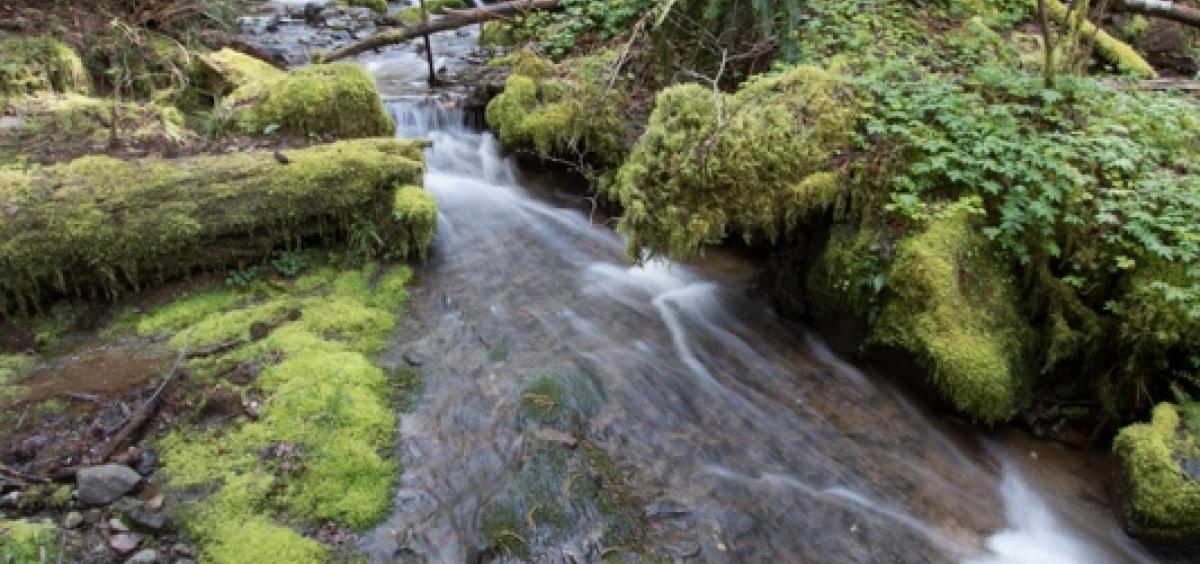
CORVALLIS, Ore. -- Young, Douglas-fir forests growing on federal land in Oregon reduce the amount of water in streams during the summer months, and the reduction shows no sign of letting up more than 60 years after the trees were planted, a new Oregon State University study has concluded.
Previous studies have found that after a clear-cut, summer streamflow can increase during the first 10 years and then decline as young planted trees become established. The reduction can be up to 50 percent less than flows from nearby mature and old-growth forests. The new analysis of experimental watershed studies managed jointly with U.S. Forest Service extends that conclusion in eight paired watersheds in the western Cascades.
For a master's degree in geography, Timothy D. Perry analyzed data at the H.J. Andrews Experimental Forest east of Eugene and in the Coyote Creek watershed in the South Umpqua Experimental Forest. In a report published in the journal Ecohydrology, he and Julia Jones, OSU professor of geography in the College of Earth, Ocean, and Atmospheric Sciences, noted that reduced flows in mountain watersheds could affect larger rivers. The reductions could lead to downstream trade-offs in water use between municipal water supplies, agricultural irrigation and in-stream habitat for fish and wildlife.
"We're still experiencing the legacy of clear-cutting that was conducted up until 1990 on federal lands," said Jones. "These plantation forests are now 20 meters tall, whereas old-growth stands can be 80 meters tall. These young stands are growing rapidly and crowded together. Their roots are much less well developed than those in a 500-year-old stand."
During the summer, mature and old-growth forests, which are growing slowly, are able to limit water loss from their foliage, whereas young conifer forests continue to take up water from the soil to sustain their growth. As a result, young, fast-growing forests withdraw soil water more rapidly than do mature and old-growth forests, reducing the amount of water that moves into streams. Forest management that aims to grow young trees as quickly as possible can thus result in lower summer streamflow.
"Does this mean that forest management reduces streamflow compared to the summer water yield if those stands were still old-growth forest? I think it probably does," said Jones. "These findings imply that summer water use by intensive plantation forestry might become an issue at a time of increased concern about water scarcity."
The possibility that climate change could affect streamflow across the West and other parts of the country raises the need to understand the impacts of forest management and fire on water supplies. Paired-watershed experiments, Jones said, are one of the direct ways to do that.
In a paired-watershed experiment, researchers gather data in two or more side-by-side watersheds that are subject to similar environmental influences. When one watershed receives a treatment such as logging, prescribed burning or fertilizer application, researchers can analyze the consequences over many years, using the untreated watershed as a control.
"It enables a precise determination of the treatment effect," said Jones. Such experiments have been a hallmark of the Long-Term Ecological Research program funded by the National Science Foundation (NSF). "These big paired watershed studies are the only place in the country where these studies have continued since 1980, but they were initially established by the U.S. Forest Service in the 1950s and 1960s. There are only a handful of places in the U.S. where long-term paired watershed forestry experiments are still being maintained."
Scientists still need to evaluate the effects on streamflow of forest management activities such as thinning and variable logging strategies in various intensities and spatial patterns. "There's some suggestion that thinning might not have much effect on streamflow, but there's a need for new experimental evidence," Jones added.
The study was supported by the NSF, the U.S. Forest Service Pacific Northwest Research Station, the Willamette National Forest and the Umpqua National Forest.
Julia Jones, [email protected], 541-737-1224
Click photos to see a full-size version. Right click and save image to download.